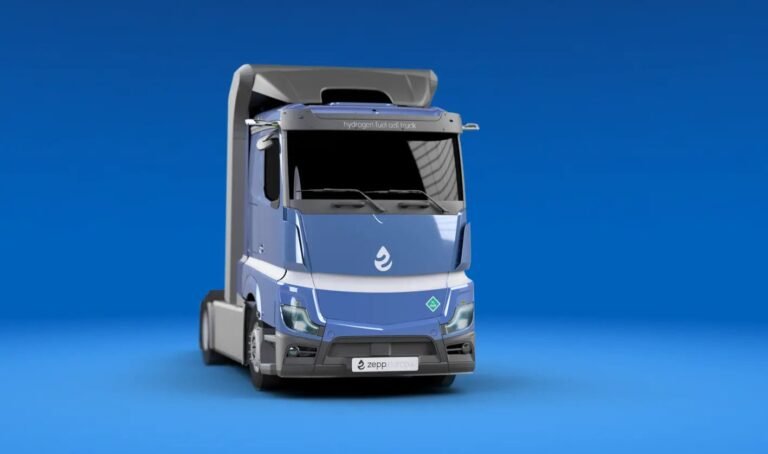zepp.solutions’ hydrogen fuel cell truck Europe will hit European roads by the third quarter of this year.
Zepp.solutions, a Dutch-based company specializing in fuel cell technology, is scheduled to launch its hydrogen fuel cell-powered Euro Truck in Europe by the end of 2023.
Zepp.solutions, a Netherlands-based startup specializing in new fuel cell technology, is scheduled to launch a zero-emission hydrogen fuel cell truck called the Europa in Europe by the end of 2023. The Europa is designed to replace diesel 4×2 units Semi trailers are widely used in European transportation.
With a sleeper cab, quick refueling and the ability to tow an ISO trailer, the Europa offers the same ease of operation and payload capacity as a diesel truck.
The truck can cover a long distance on a single tank of hydrogen, with more than 50kg of usable hydrogen on board and a range of more than 700km. By late 2024, the truck will also be available in a 700 bar hydrogen storage version with a range of more than 1,000 km.
According to Zepp.solutions, the hydrogen-electric powertrain, featuring the zepp X150 fuel cell module, can be installed in other vehicle configurations such as box trucks and taxis.
The X150 fuel cell module and hydrogen storage systems are also available as standalone units for integration into vehicles or other applications.
Related Article: Mighty Edition of Hyundai’s Electric Range
The Europa design has been optimized for the European transport sector, and complies with stringent EU regulations. Their lightweight construction makes them comparable in payload capacity to diesel trucks, and EU legislation allows a maximum gross vehicle weight of 42 metric tons for zero-emission N3 articulated vehicles.
“Europe Truck is another shining example of our commitment to providing sustainable transportation solutions to the market,” says Kevin Schreiber, co-founder of Zepp.solutions.
“Our X150 integrated hydrogen fuel cell system and hydrogen storage systems are also available for integration by other manufacturers. We look forward to their applications for our systems.”





